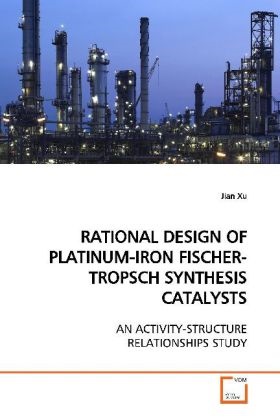Read more
Silica-supported iron catalysts were prepared using
an advanced non-aqueous evaporative deposition
technique, which leads to a catalyst with high
extents of reduction, high CO conversions, and high
C2+ hydrocarbons productivities. The catalysts were
tested following an L18 orthogonal array statistical
design approach. Primary independent variables
affecting catalysts activity were promoter type,
pretreatment gas composition, pretreatment and
reaction temperature. Steady state catalytic
activity is positively correlated with increasing
bulk chi-carbide content for silica-supported Fe and
FePt catalysts but not for FePtK.
The bulk and surface carbonaceous species was both
measured with high pressure in situ Mössbauer
spectroscopy and TPSR-MS. A correlation between the
amount of reactive -carbon (C ) and initial
catalytic activity was established. An modified
method was proposed for quantitative measurement of
irreversible CO site density on the iron catalysts.
Finally, a comprehensive model was proposed for iron
phase transformations during pretreatment, FTS and
post-reaction passivation/oxidation.
About the author
Dr. Jian Xu graduated from Brigham Young University in 2003 with a brief a postdoc fellow work in UC Berkeley. Currently he is the Deputy Director of the R&D center under Synfuels China. From 2004 to 2007, he worked as a senior project engineer for China Shenhua Coal Liquefaction company and the China Combined Working Team.

